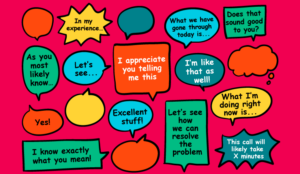Steve Bell of Talkdesk discusses how automation technologies can augment customer support operations that are reeling during this difficult period.
The Contact Centre Is Under Siege
News continues to flood in about contact centres bombarded with calls from concerned customers. The sheer volume increase would overwhelm even a fully staffed contact centre. Now throw in the fact that centres are operating with partial staff or shutting down altogether.
Moving agents to work remotely is part of the solution, but more can be done to help reduce call volumes for a transitioning workforce that’s already stretched thin.
Reach out to Your Customers Proactively
Your customers need information now more than ever. They need answers to day-to-day questions arising from the coronavirus pandemic. Is your store open? What hours? When is my package arriving? Where is my food order? What does my insurance cover?
What doctor is in my network? When is my prescription ready?… And countless other enquiries. Painfully long hold queues are the last thing customers need during these stressful times.
One way to help them, and help your contact centre, is to engage proactively. Even before the coronavirus pandemic broke, your customers expected you to engage proactively.
Now it’s even more critical.
With proactive notifications you can engage your customers in their time of need. This provides the dual benefits of delivering a better customer experience and also deflecting incoming calls, which lightens the burden on agents and reduces cost.
You’re able to send timely notifications using either phone or SMS in a completely agentless mode.
Upon hearing the message, your customers are prompted by an IVR option to hang up if they have the information they need, or connect to an agent if they want to learn more.
With this process, most of the simple questions are answered through proactive automation and only a smaller volume of remaining calls require agent involvement.
Here is just a sample of potential use cases for proactive notifications during this crisis:
- Store closing announcements
- Business hours
- Product availability updates
- Food delivery status
- Medical appointment updates
- Public safety announcements
Help Your Customers Help Themselves
The trend toward customer self-service has been underway for some time, initially driven by millennial expectations.
With contact centres reeling from the current pandemic, effective self-service has become a necessity to support customers and mitigate the flood of incoming calls overwhelming support operations.
Look to embed self-service touchpoints into apps, websites, messaging platforms and voice channels to answer common customer questions.
After, try automating your voice channel (the most heavily relied-upon channel) with a virtual agent that offers conversational, human-like service with speech recognition and text-to-speech technologies.
For text-based interactions over social channels or live chat, chatbots offer a similar conversational experience enhanced by the ability to share links or other content provided by a knowledge-base solution.
Guide is the knowledge backbone for all self-service interactions, ensuring customers and agents receive accurate, curated information — quickly.
Self-service provides customers with always-on support to solve their problems in a time of uncertainty, while still offering seamless escalation to live help when needed.
By handling repeatable, common enquiries, self-service automation offloads increasing call volumes that may be difficult to handle with live support during the current crisis.
It Takes a Concerted Effort
No one technology can solve the overwhelming challenge facing contact centres today.
Combined with work-at-home agents, adopting automation tools such as proactive notifications and customer self-service are key components to supporting customer service business continuity efforts.
This blog post has been re-published by kind permission of Talkdesk – View the Original Article
For more information about Talkdesk - visit the Talkdesk Website
Call Centre Helper is not responsible for the content of these guest blog posts. The opinions expressed in this article are those of the author, and do not necessarily reflect those of Call Centre Helper.
Author: Talkdesk
Published On: 26th Mar 2020 - Last modified: 31st Mar 2020
Read more about - Guest Blogs, Coronavirus, Talkdesk






 Talkdesk is a global customer experience leader for customer-obsessed companies. Our contact center solution provides a better way for businesses and customers to engage with one another.
Talkdesk is a global customer experience leader for customer-obsessed companies. Our contact center solution provides a better way for businesses and customers to engage with one another. 


































